On average, sales teams use 10 tools to close deals.
Not just that. There are multiple tools for each revenue function as well.
As a buyer, it could be overwhelming to step into this scenario. And at the end of it all, if you can’t strategically implement tools, you risk causing revenue leakage.
However, the reality is that, despite so many tools available, revenue leaders fail to see user adoption and clear ROI.
For instance, 89% of sales organizations have adopted a CRM. But only 39% of CSOs are satisfied or very satisfied with the tools at their disposal.
As revenue tech continues to expand, how can you drive more efficiency using the right tech stack?
We have collated learnings from our conversation with RevTech expert Don Otvos, VP of Business Development & Alliances at LeanData. Here’s a detailed breakdown of the lessons Don shared with us:
You can tune in to the conversation below:
Growing Revenue Without a Tech Stack: What Are You Missing Out On?
A RevOps tech stack consists of business tools, software and applications that support and optimize revenue-generating workflows.
Companies using revenue operations and intelligence (RO&I) solutions are seeing significant optimization benefits. And this tech stack is essential to keep up with everything going on within your organization as well as outside (competitors).
If you still need convincing, here are 10 more reasons why you need an integrated RevOps tech stack.
- It reduces data inconsistencies
- It connects disparate systems.
- You can create seamless cross-functional alignment.
- You can track and support the customer journey end-to-end.
- It gives you visibility into inputs and outcomes of the RevOps process.
- You get access to real-time insights into customer behavior and expansion potential.
- Your teams develop a better understanding of success metrics and KPIs.
- A tech stack makes the RevOps process more efficient with automation.
- You can make data-driven and informed business decisions using data analytics.
- Revenue tech enables you to scale your business into the next stage.
Overall, a RevOps tech stack improves your GTM agility. You can respond to customer needs and market changes faster, increasing your growth velocity.
Building a Robust Revops Tech Stack (Plus the Tools That Really Matter)
We got Don Otvos, VP of Business Development & Alliances at Lean Data (and previously, VP of Revenue Operations), to share his expertise on building a solid tech stack.
Given his extensive experience in this area, Don gave us some priceless advice and tips. We’ve condensed this into 6 steps below.
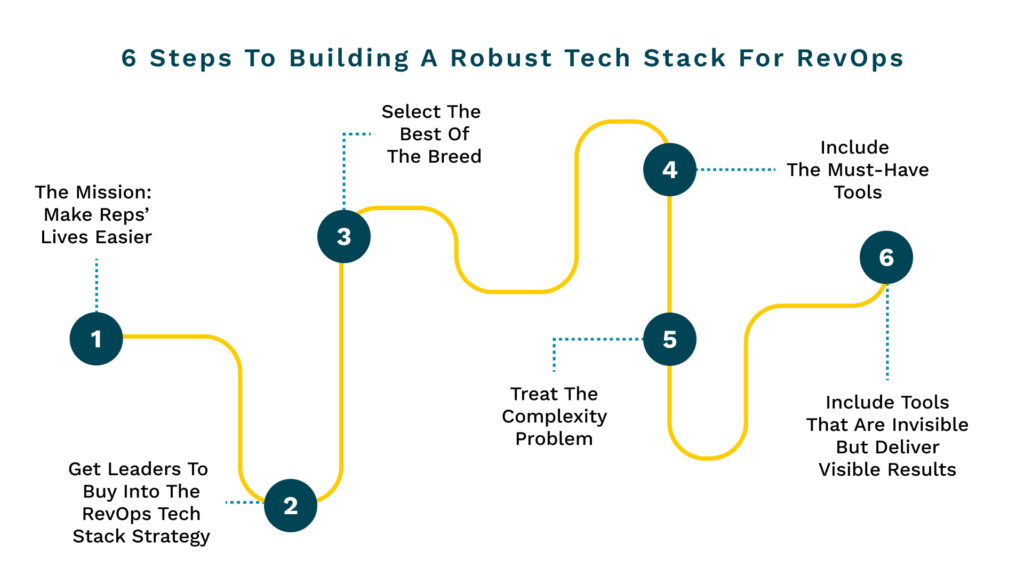
Let’s get started!
1. The Mission: Make Reps’ Lives Easier
Making this seemingly impossible mission possible is a reach. It’s also the critical first step to building a RevOps tech stack by considering user experience and the value derived.
Don comes from a sales ops background, which means that he understands the on-ground reality of users (in this case, reps). And therefore, his top advice is to make reps’ lives easier with tech.
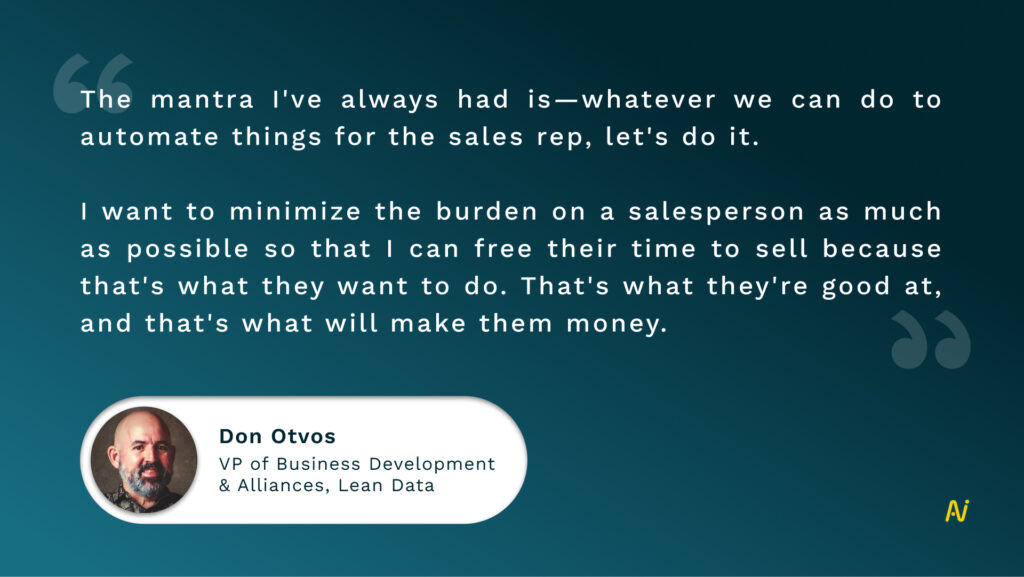
Focus on simplifying your reps’ revenue process while providing analytics to drive decision-making and lead the teams.
While that may sound like a complicated task, you can do a few things to maintain this focus.
a. Map requirements
Before shortlisting tools for your tech stack, create a list of requirements mapped to user needs. You can determine these requirements by talking to reps and understanding their pain points.
You could also look at their past performance or track their sales activities.
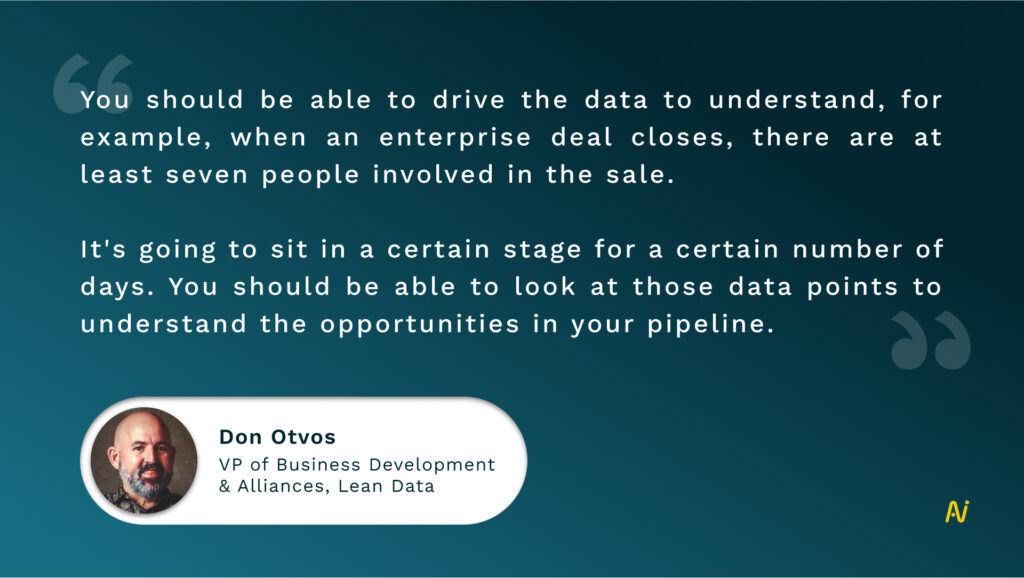
Once you find the gaps, you can determine the requirements better. Then, include the features, pricing, integrations and other important factors you want in the tool.
While doing this, remember to align your current needs with future tech initiatives so you don’t stray from long-term business goals.
b. Review before implementation
Alongside the requirements, scope out specific user needs with contextual data. Align these needs to use cases to narrow down the list of tools further.
For instance, your reps may miss insights from buyer-seller interactions because they take notes manually. A conversational intelligence tool with an automated notes-taking feature may be the need of the hour.
Once done, identify the best tools from the market to serve your needs. Make the most of demos and free trials, and ask detailed questions to finalize the tools.
c. Set Up user processes
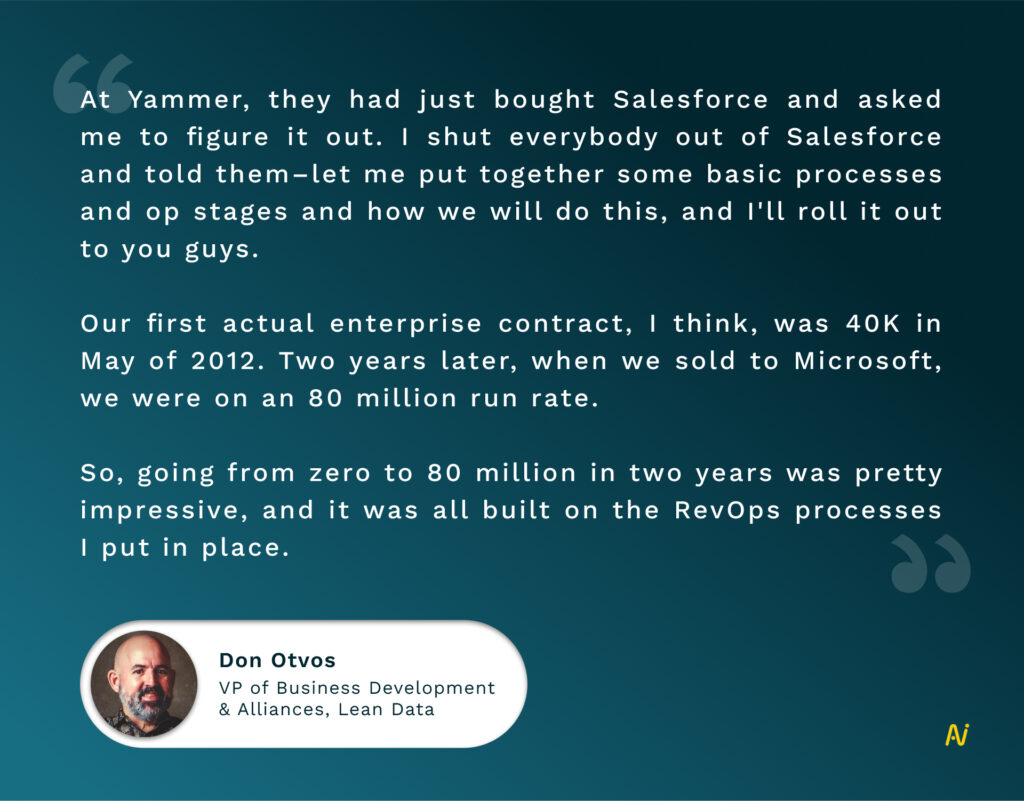
As Don points out, first set up processes and the ops stages instead of implementing tools with reps directly.
When this is in place, reps know the use cases for each tool and can leverage these use cases to their advantage.

2. Get Leaders to Buy Into the Revops Tech Stack Strategy
But it’s not just reps who need to buy into the RevOps tech stack. Leaders do, too.
Convincing your leadership to imbibe a data-driven mindset, particularly when you’re new to RevOps, can be intimidating. However, thoughtful leaders understand that data drives most business decision-making processes.
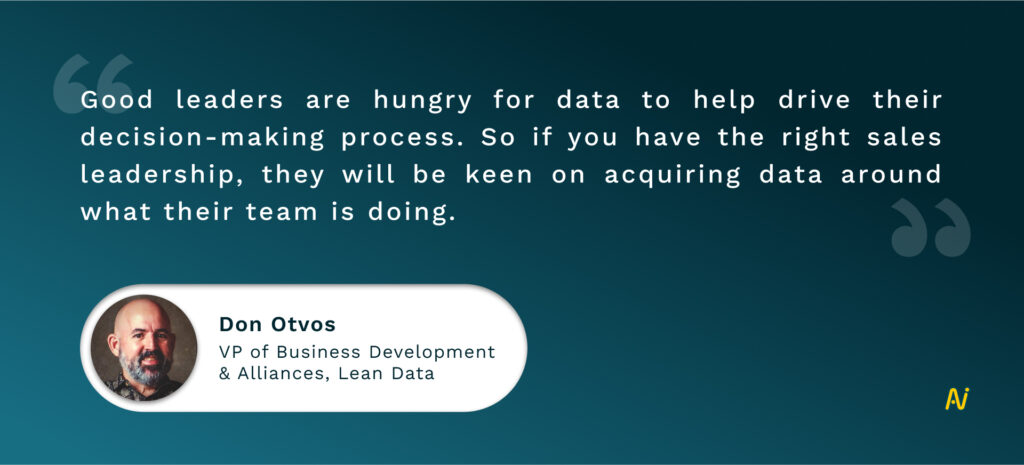
Here’s how you can encourage executive buy-in for your tech stack, especially if it’s your first.
a. Identify key stakeholders
After putting together your requirements and a tech stack blueprint in place, you must identify the stakeholders in the buying committee.
Stakeholders are the ones who will substantially influence the buying decision. Their word holds weight.
But not all leaders may be a stakeholder for each tool. For instance, if you’re shortlisting a tool for contracts and fast payment processing, the CMO may not influence the purchase process.
b. Highlight benefits
One of the primary objectives of leaders is value. Each investment must bring value.
As such, leaders want to know how their teams and the organization benefit from the tools you’ve selected.
Demonstrate benefits with use cases, data points and reports for your RevOps tech stack.
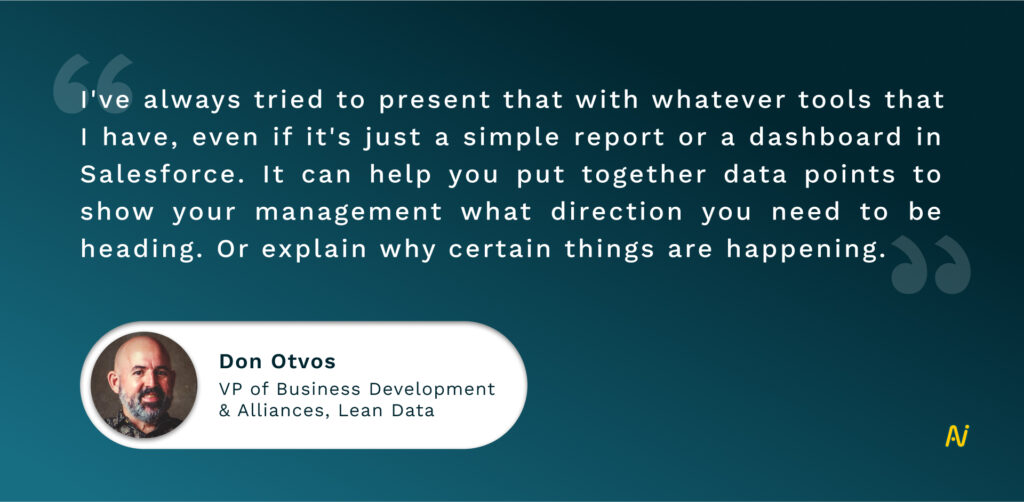
c. Communicate clearly
Stakeholders may also need to be involved in enabling and evaluating tools. For things to go smoothly, they must know where their presence is needed most.
Consider this. When buying a sales intelligence tool, the Legal head may not be involved during the initial process. However, they will play a key role when signing the contract.
Communicate to each stakeholder their respective roles so that the buying process moves quicker.
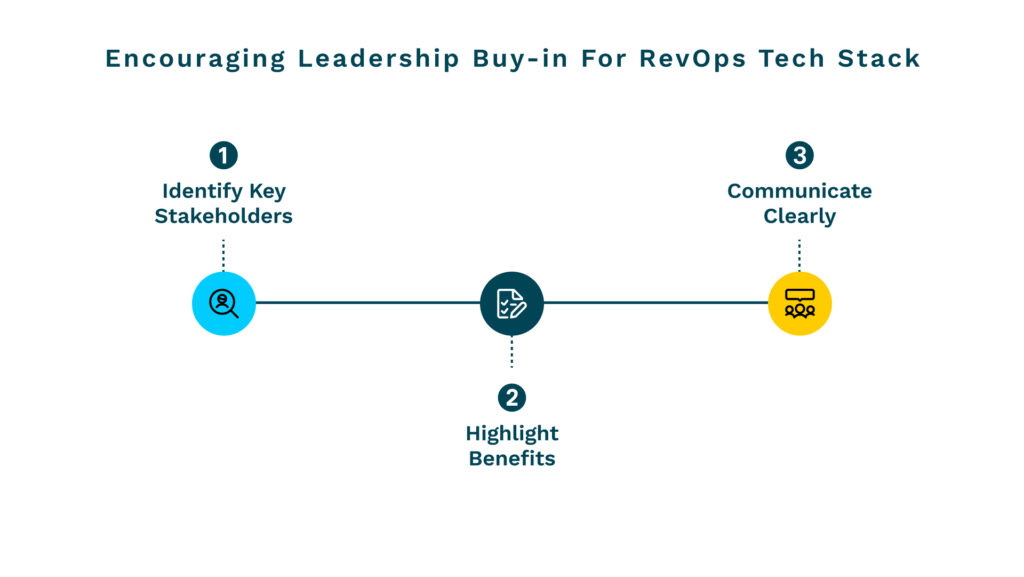
3. Select the Best of the Breed
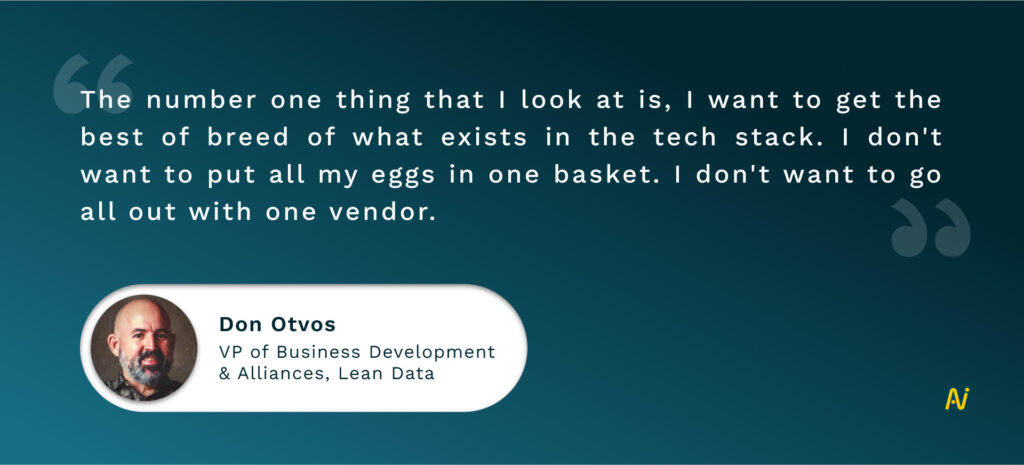
Every organization’s needs and use cases are different. Therefore, a single cloud portfolio or publisher suite can’t satisfy all your requirements.
Moreover, several vendors become prominent names by excelling at one solution. But to justify their valuation and expand, they dip their feet into other solutions or features which may not be as excellent.
Avoid falling for the grandeur and, instead, focus on technology that the vendor is the best at. This is getting the “best of the breed” in your tech stack.
Below are five factors to consider for selecting the best-of-the-breed tools.
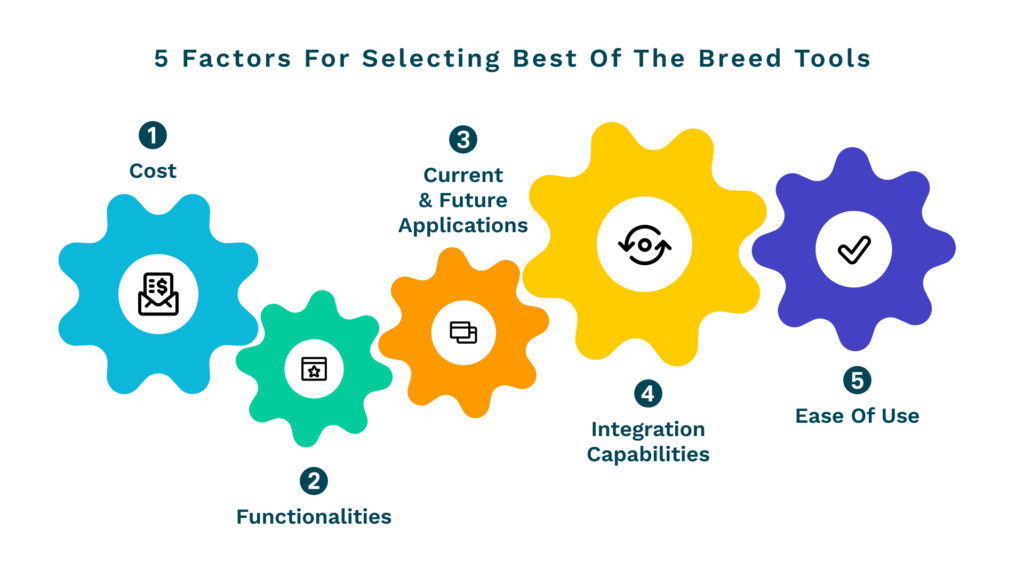
a. Cost
Different tools and providers will have different costs. Compare them and find one that fits your budget.
But remember, the cheapest one is not always the best.
b. Functionalities
Best-of-breed apps have more robust functionalities and may be more developed than others. However, it doesn’t mean they’re the best if they come with the largest number of features.
Seek out the ones with the most relevant features for your needs.
c. Current and future application
Check each tool’s scalability. It should fit your use cases in the present and future scenarios. For instance, data management and security must improve as more regulations fall into place.
d. Integration capabilities
The tools must have integration capabilities to connect to apps you have right now and may add to the stack in the future.
They must be flexible and enable a seamless exchange of data.
e. Ease of Use
Each tool must be user-friendly and convenient to use. When you select best-of-breed apps, they typically have distinguishable user interfaces that reps find easier to navigate.
4. Include the Must-Have Tools
According to Gartner, your RO&I capabilities aren’t made of only core tools or supplementary tools. It’s a combination of both.
Core tools form the spine of the tech stack. These tools must integrate seamlessly with all other tools and exchange data. They also provide an all-encompassing view of your RevOps process.
According to Don, some of the tools you must include in a starter RevOps tech stack are:
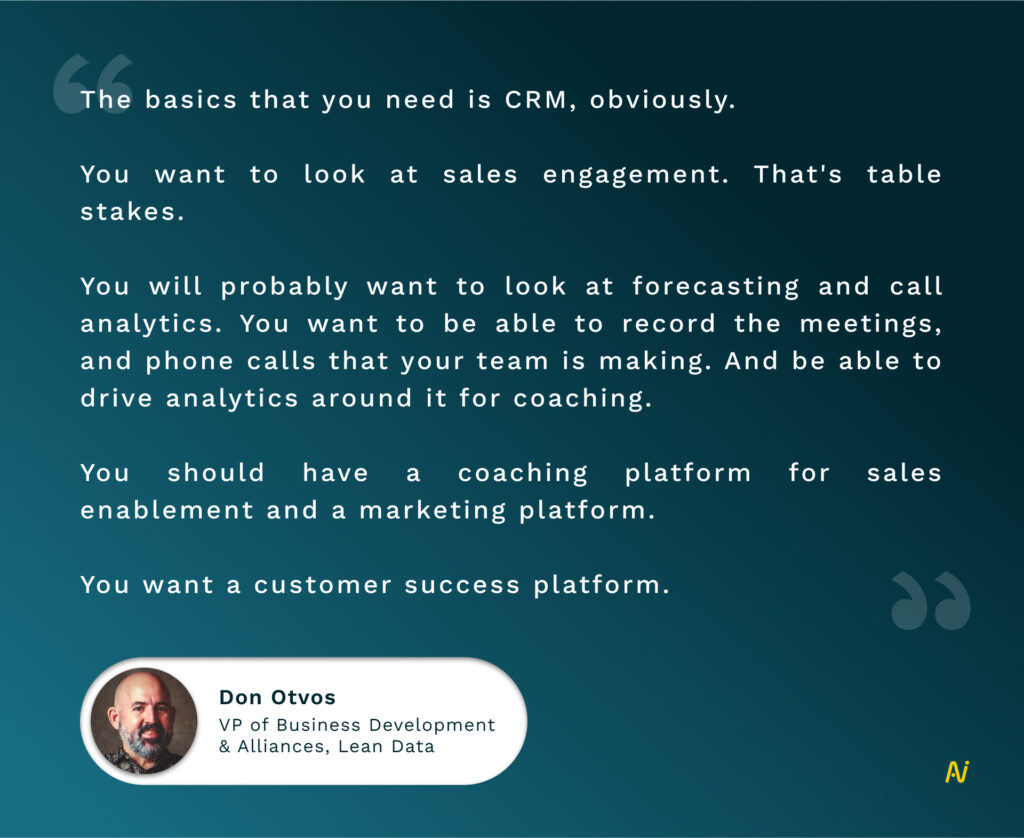
Here’s why these tools are an absolute must.
a. CRM
The CRM is the central point of the tech stack. Ideally, all information must flow into the CRM, making it the single source of truth.
Key functionalities to watch out for:
- Contact management
- Marketing and sales automation
- Lead and opportunity tracking
- Data enrichment
- Relationship intelligence
b. Sales Engagement
A sales engagement tool helps reps interact better with buyers through digital channels. Overall, it improves sales prospecting.
Key functionalities to watch out for:
- Digital channels
- Contact data
- Lead enrichment
- Automating selling actions
- Customer insights
- Organizing day-to-day tasks
- Sales prospecting resources
c. Sales Enablement
In a June 2022 Salesforce survey, 74% of sellers felt their jobs are becoming more consultative and less transactional. As such, they must advance their understanding of the product, customer and market to offer more value.
Sales enablement provides reps the support, resources and insights to improve selling skills, close more deals and be more productive.
Key functionalities to watch out for:
- Content storage and sharing
- Guided selling
- Coaching resources
- Email tracking
- Meeting scheduling
- Prospecting templates
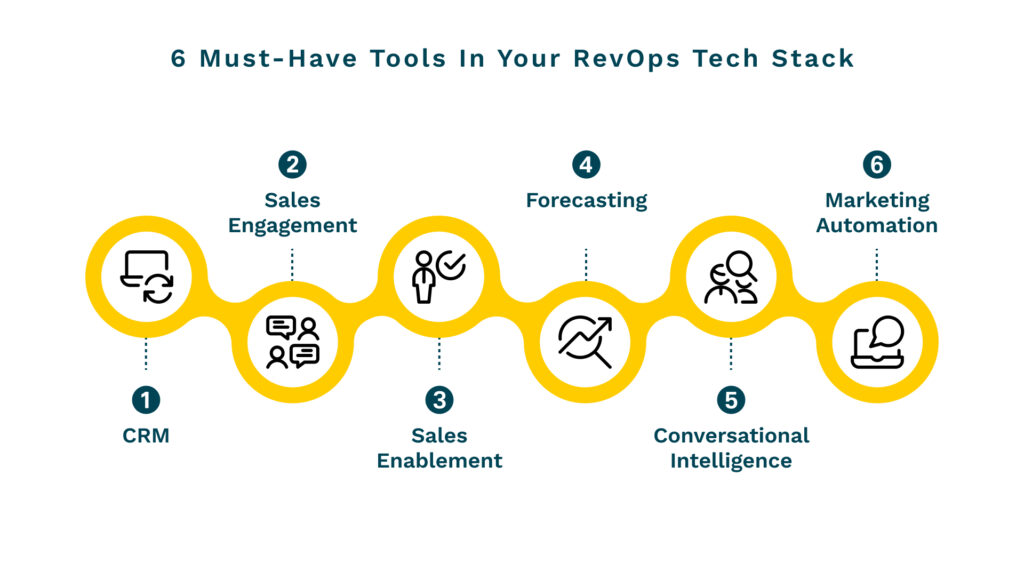
d. Forecasting
Forecasting revenue is important to set business goals and make data-driven decisions to support those goals. A forecasting tool automates the process, so you need mere minutes instead of spending months preparing a forecast.
Key functionalities to watch out for:
- Scenario planning
- Historical data analysis
- Forecast modeling
- Automated data collection
- Benchmarking and goal setting
e. Conversational Intelligence
A conversational intelligence tool records, transcribes and analyzes sales calls. It generates insights from this data to improve your close/won rate.
It can also be used for coaching reps.
Key functionalities to watch out for:
- Call analytics
- Call recording and speech-to-text
- Risk language detection
- Conversation recommendations
- Auto dialler
- Email-calendar-linkedin-call integration
f. Marketing Automation
More than 4 in 10 marketers say they worked on more campaigns each quarter from 2021 to 2022. With the number of campaigns increasing, you need a marketing automation tool to manage all the corresponding data and tasks.
Marketing automation works with multiple channels to publish content. It also automates repetitive tasks and data analytics.
Overall, it improves the marketing team’s efficiency and productivity.
Key functionalities to watch out for:
- Content management
- SEO
- Campaign management
- A/B testing
- Social media management
- Lead management
- Analytics dashboards
5. Treat the Complexity Problem

The RevOps tech stack becomes more complex as you reach the next growth stage in your maturity journey. Also, the number of tools in the tech stack increase, simultaneously increasing the number of pain points.
Some challenges you will come across include:
- Determining which tools to continue with, given their ease of use, cost and scalability
- Data becomes stale, inaccurate or incomplete
- Integration is more complicated to navigate, and apps may not sync correctly
- Reps may slow down the adoption of new tools as they get comfortable with older ones
- More experimentation is needed before finding the right tool for an organization of your size
And most importantly, it may become difficult to stick to a single source of truth and orchestrate all your data within this source.
For instance, you may want the CRM to be your single source of truth. However, sales are more comfortable entering data in the sales management or enablement platform. Linking this data to the CRM becomes a pain point if your integration is poor.
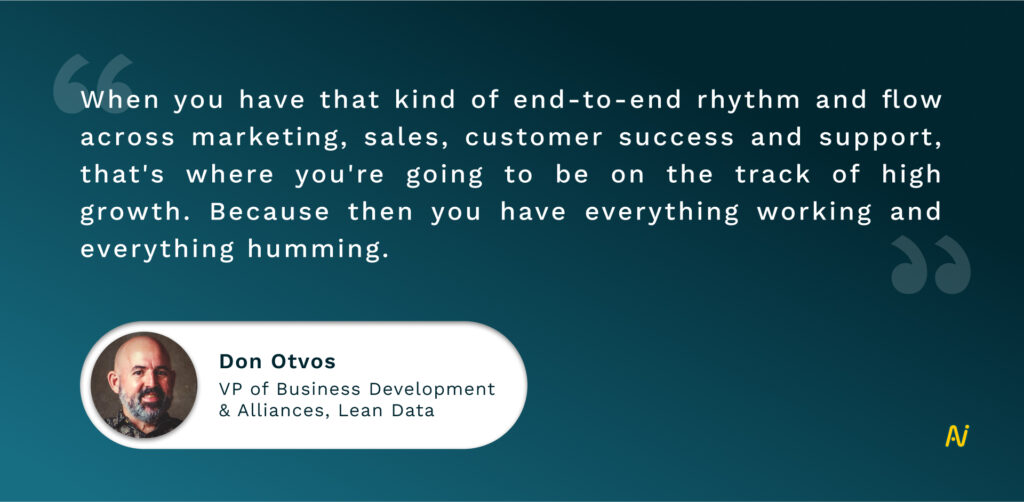
a. Have a single source of truth
Ensure that a signal from one tool flows through your CRM and becomes actionable for another tool. Both tools could be located anywhere in the tech stack.
b. Test, evaluate and continuously improve
Periodically test and evaluate if each tool works with the rest of the stack. You could also track progress and measure your ROI.
If a tool no longer offers enough value, it may be time to replace it. Make adjustments, as needed, to optimize the stack.
c. Avoid piling on tech
Don’t fall for the “more tools, more revenue” notion. In times when growth has slowed down, the primary aim should be to unify data and make it available for all teams.
d. Automate, automate, automate
Reps aren’t great at adding data to the CRM. For instance, if a stakeholder gets added to a meeting at the last moment, they may get added via email, but reps may not add their contact data to the CRM. Instead, reps need to concentrate on selling.
Therefore, ensure that you automate data entry and other repetitive work for reps.
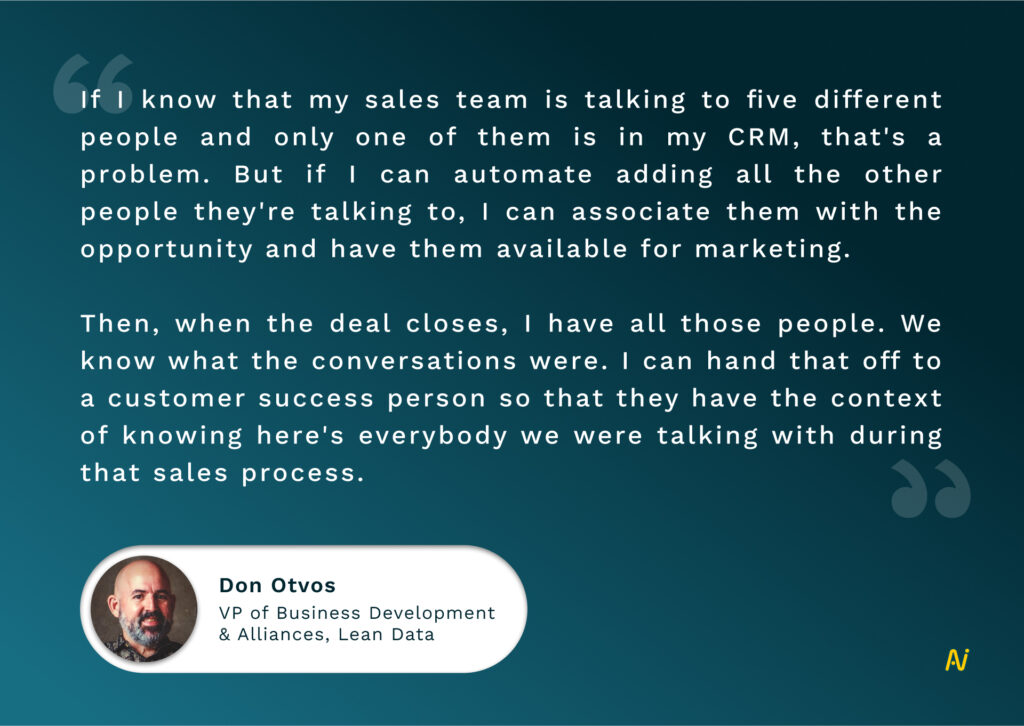
6. Include Tools That Are Invisible but Deliver Visible Results
A rep may not work with every tool in the RevOps tech stack. Even if they don’t need to engage with all tools, RevOps needs to highlight each tool’s value to the organization.
These are called invisible tools and primarily help improve productivity.
For example, an invisible tool can undertake tasks like data analysis and provide insights on making reps productive. It doesn’t need reps to be involved in updating their performance tracker manually.
Including invisible tools that deliver visible results goes back to automating workflows for reps. Instead of reps doing the grunt work and logging every email or meeting, an invisible tool can shoulder that responsibility.
Two categories in the tech stack can have invisible tools:
- Conversational intelligence
- Activity and contact capture
According to Gartner, these are also the two main pillars of the RevOps tech stack. Having invisible tools in these categories is a must. It impacts rep productivity and revenue positively.
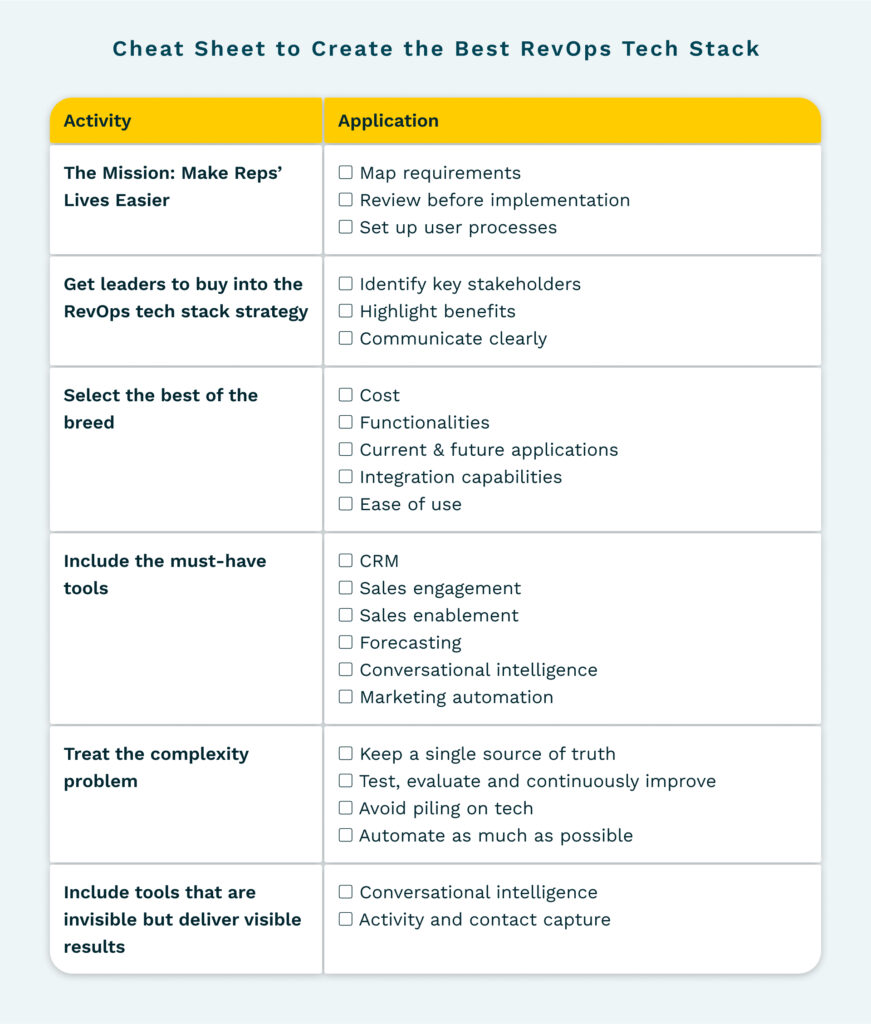
Finally, Use a Solid Data Foundation for a Resilient RevOps Tech Stack
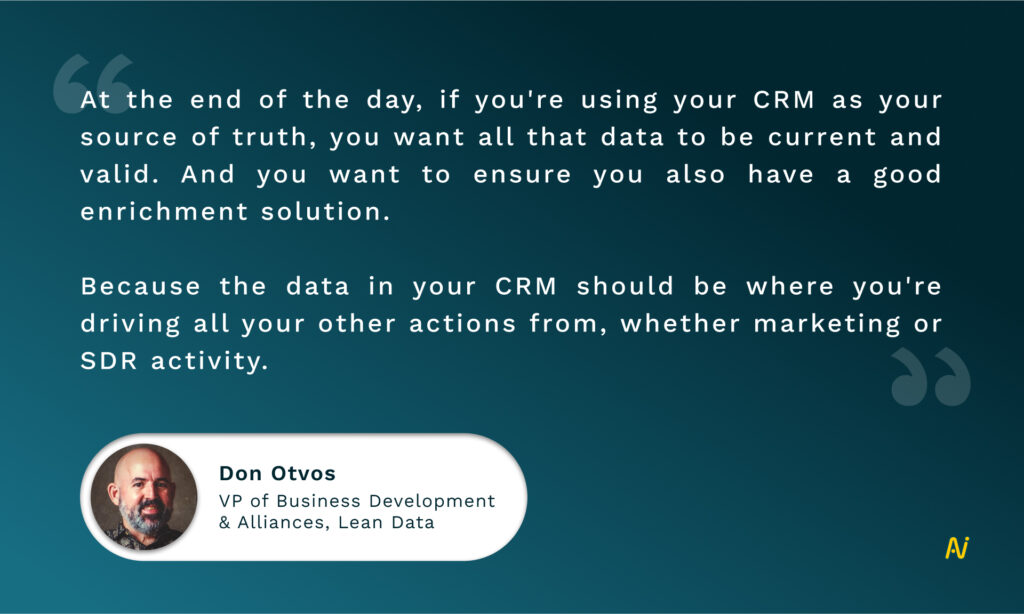
Data hygiene, particularly in the CRM, should be the underlying foundation for the RevOps tech stack.
And it all starts by ensuring that data is documented correctly and unified through automation.
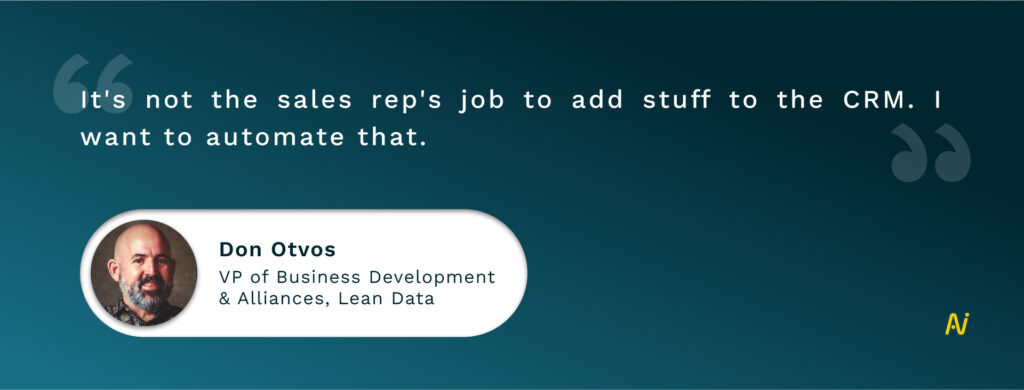
Next comes the understanding of why a deal hasn’t moved forward to closed/won status.

About Nektar
Nektar is an AI for RevOps that drives funnel efficiency by plugging your CRM data holes/gaps and discovers hidden revenue from your customer interaction data.
Nektar unifies data capture by automatically gathering and integrating full-funnel activity. It makes clean and accurate contact data available to all frontline teams. The platform secures data integrity and maintains hygiene for a true view of your sales pipeline and revenue intelligence.
Nektar further integrates the revenue tech stack to amplify ROI. It gathers data from multiple channels, including email, calls, Slack, and more. Get in touch with us if you’d like to learn more.
But why stop there?
We also consolidated our ultimate guide to RevOps roadmap ebook after speaking to 150+ revenue leaders. In this free guide, you’ll find templates, checklists and plans on how to build your very own RevOps roadmap!








